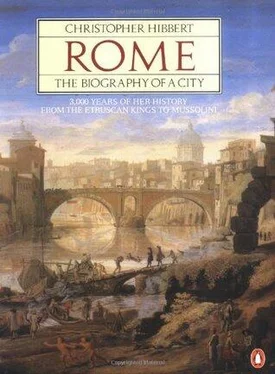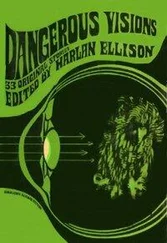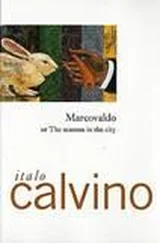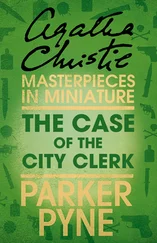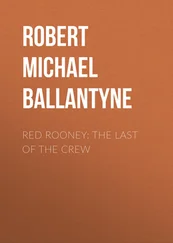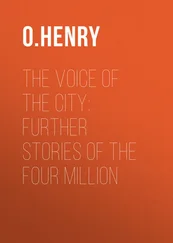Christopher Hibbert - Rome. The Biography of the City
Здесь есть возможность читать онлайн «Christopher Hibbert - Rome. The Biography of the City» весь текст электронной книги совершенно бесплатно (целиком полную версию без сокращений). В некоторых случаях можно слушать аудио, скачать через торрент в формате fb2 и присутствует краткое содержание. Жанр: Культурология, Искусство и Дизайн, на английском языке. Описание произведения, (предисловие) а так же отзывы посетителей доступны на портале библиотеки ЛибКат.
- Название:Rome. The Biography of the City
- Автор:
- Жанр:
- Год:неизвестен
- ISBN:нет данных
- Рейтинг книги:3 / 5. Голосов: 1
-
Избранное:Добавить в избранное
- Отзывы:
-
Ваша оценка:
- 60
- 1
- 2
- 3
- 4
- 5
Rome. The Biography of the City: краткое содержание, описание и аннотация
Предлагаем к чтению аннотацию, описание, краткое содержание или предисловие (зависит от того, что написал сам автор книги «Rome. The Biography of the City»). Если вы не нашли необходимую информацию о книге — напишите в комментариях, мы постараемся отыскать её.
Rome. The Biography of the City — читать онлайн бесплатно полную книгу (весь текст) целиком
Ниже представлен текст книги, разбитый по страницам. Система сохранения места последней прочитанной страницы, позволяет с удобством читать онлайн бесплатно книгу «Rome. The Biography of the City», без необходимости каждый раз заново искать на чём Вы остановились. Поставьте закладку, и сможете в любой момент перейти на страницу, на которой закончили чтение.
Интервал:
Закладка:
9. The VILLA GIULIA (or VILLA DI PAPA GIULIO), now a museum of Etruscan art, was built by Vignola for Pope Julius III from 1551 to 1553. It stands in its own park at the southern end of the Valle Giulia close to the GALLERIA NAZIONALE D'ARTE MODERNA. The loggia at the end of the courtyard is by Bartolommeo Ammanati. The villa, as well as its garden and the adjoining nymphaeum , was originally adorned with statues, urns and large vases containing orange and lemon trees.
10. The STATUE OF POMPEY is now in the Salone del Trono of the PALAZZO SPADA. It dates from early imperial times and represents a ‘nude and noble’ captain making an oration. It came to be identified with the statue in the curia of POMPEY'S THEATRE at the foot of which Caesar was supposed to have been murdered. It was discovered in the 1550s during excavations in the Via Leutari and was acquired by Pope Julius III.
11. The PALAZZO SPADA in the Piazza della Quercia was begun, probably by Giulio Merisi da Caravaggio in about 1549 for Cardinal Capodiferro. The decorations were completed in 1559. The elaborate stucco decoration is by Giulio Mazzoni. In 1559 the palace passed to the Mignanelli family and then, in 1632, to Cardinal Spada. Borromini restored the palace after 1632 and added its most notable feature, a trompe l'œil perspective in the garden gallery. In 1927 the Spada family sold it to the Italian state for use as the offices of the Consiglio di Stato. The GALLERIA SPADA contains works of art assembled by Cardinal Bernardino Spada and is the only small family collection to have survived in Rome.
12. The church of S. LUCIA DEL GONFALONE in the Via dei Banchi Vecchi was built for the ancient fraternity of the Gonfalone at the beginning of the fourteenth century and rebuilt in the Baroque style in 1764 by the Roman architect, Marco David. It was restored in 1866 by Franco Azzurri.
13. Founded by Pope Gregory XIII, the COLLEGIO ROMANO was built in 1583–5 by Bartolommeo Ammanati as the main centre of study for the Jesuits in whose hands it remained until 1870 when it was taken over by the Italian government and became a state school, now the Liceo-Ginnasio Visconti. The vast building also housed the Biblioteca Nazionale Centrale Vittorio Emanuele II, which was formed out of a number of libraries of various religious communities, including that of the Jesuits in the Collegio Romano, and the library of the Prehistoric and Ethnographic Museum L. Pigorini which has now been moved to the SCIENTIFIC MUSEUM in the E.U.R. Adjoining the Collegio Romano is the Jesuit church of S. IGNAZIO. This was commissioned by Cardinal Lodovico Ludovisi, whose uncle, Gregory XV, had studied there. Domenichino, among others, was asked to submit a design but the plans of the Jesuit Orazio Grassi were preferred. The wonderful trompe l'œil ceiling in the magnificently Baroque interior is the work of another Jesuit, Andrea Pozzo.
14. The church of the GESÙ, which was the model for a type of Counter-Reformation church in what has been called the Jesuit style, was designed by Vignola for the powerful Cardinal Alessandro Farnese who was said to have owned the three most beautiful objects in Rome, his family palace, his daughter and this church of the Gesù. The façade is generally thought to have been adapted by Giacomo della Porta from Vignola's design, though it has also been attributed to the Jesuit, Giuseppe Valeriani. Begun in 1568, the church was consecrated in 1584 and is the main Jesuit church in Rome. The opulence and colours of the mainly eighteenth- and nineteenth-century decoration are in keeping with Jesuit ideas of attracting worshippers by grand spectacle. The main paintings, by the Genoese Giovanni Battista Gaulli, were executed in 1672–85. The breathtakingly luxuriant tomb of St Ignatius of Loyola is resplendent with lapis lazuli. The globe at the summit is the largest piece of this stone in the world.
15. The oratory and church of S. MARIA IN VALLICELLA or CHIESA NUOVA was begun by that most charitable of mystics, St Philip Neri, with the labour of members of his congregation of Oratorians and with the help of Pope Gregory XIII. It was built on the site of a twelfth-century church and largely designed by Martino Longhi the elder who replaced Matteo da Città di Castello as architect. Consecrated in 1599, the church was not completed until 1605 by the erection of Fausto Rughesi's façade. Although St Philip wanted the church interior to remain simply whitewashed, Pietro da Cortona was commissioned in 1647 to decorate it with the frescos which took him twenty years to complete. The three paintings on either side of and above the altar are exceptional works by Rubens. The adjoining oratory is by Borromini (1637–62). St Philip Neri found Federico Barocci's altar painting in the Chapel of the Visitation so moving that he ‘would sit on a small chair in front of it and all unconsciously be rapt into a sweet ecstasy’. Women gathered to look at him in wonderment and he would then turn upon them crossly and send them away as though embarrassed to be caught in so transfixed a state. Before moving to S. Maria in Vallicella, St Philip Neri had lived with the Arciconfraternita della Carità, a charitable company founded in 1519 by Cardinal Giulio de' Medici, later Clement VII. The company's church, s. GIROLAMO DELLA CARITÀ in Via di Monserrato, which had originally belonged to the Franciscan observants, was rebuilt by Domenico Castello and was finished in about 1660. Here St Philip had attracted a large group of disciples of all classes. So many people came to see him that he had to obtain permission to use the loft over one of the aisles of the church as an oratory, a chapel for prayer without a mass altar. This was the origin of the name which in time became attached to the spiritual exercises which he initiated, the room where they took place, and the congregation which promoted them. From the church St Philip went about Rome, comforting the sick in hospitals and making regular pilgrimages to the seven major basilicas of Rome, accompanied by large crowds of up to a thousand people, with a choir singing litanies and trumpets sounding fanfares.
16. The FOUNTAINS in PIAZZA NICOSIA and PIAZZA COLONNA are by Giacomo della Porta. The one in Piazza Nicosia, made in 1573, was originally in PIAZZA DEL POPOLO.
17. The ACCADEMIA DI S. LUCA, constituted as an academy of fine arts in 1577, was the successor of a much older corporation of artists dating back at least to the fourteenth century and reconstituted in 1478. In 1588 when Sixtus V gave the sixth-century church of S. Martina to the Academy, the church assumed the name of ss. LUCA E MARTINA and premises were built next door for the use of members of the Academy. These premises, together with the church, were demolished in 1931–3 to make way for the Via dei Fori Imperiali. New premises were found for the Academy in the Palazzo Carpegna in the Piazza dell' Accademia di S. Luca near the TREVI FOUNTAIN.
18. The QUIRINAL PALACE was begun in 1574 on the site of a villa built by Cardinal Ippolito d'Este. A succession of architects contributed to its construction, including Flaminio, Domenico Fontana, Carlo Maderno, Bernini and Ferdinando Fuga. Although not finally completed until the pontificate of Clement X11 (1730–40), it was used quite regularly by the popes after Clement VIII first occupied it in 1592. The palace was taken over by King Victor Emmanuel II in 1870 and has remained the residence of the heads of the Italian State ever since. The large chapel is by Carlo Maderno.
19. The OBELISK in PIAZZA DEL POPOLO was raised in front of the Temple of the Sun in Heliopolis by the Pharaohs Rameses II and his son Merneptah and was brought to Rome by Augustus for the CIRCUS MAXIMUS. It was moved to its present position in 1589. In 1823 its base was embellished by four marble lions and basins under the direction of Giuseppe Valadier.
Читать дальшеИнтервал:
Закладка:
Похожие книги на «Rome. The Biography of the City»
Представляем Вашему вниманию похожие книги на «Rome. The Biography of the City» списком для выбора. Мы отобрали схожую по названию и смыслу литературу в надежде предоставить читателям больше вариантов отыскать новые, интересные, ещё непрочитанные произведения.
Обсуждение, отзывы о книге «Rome. The Biography of the City» и просто собственные мнения читателей. Оставьте ваши комментарии, напишите, что Вы думаете о произведении, его смысле или главных героях. Укажите что конкретно понравилось, а что нет, и почему Вы так считаете.
